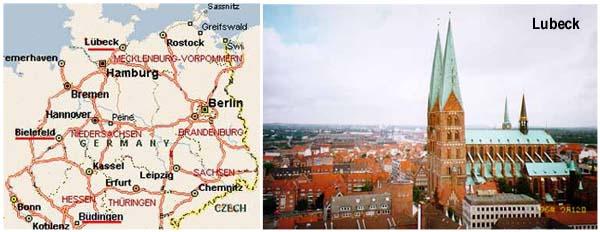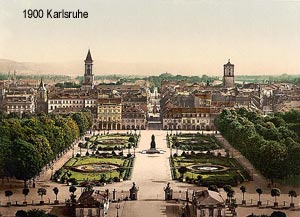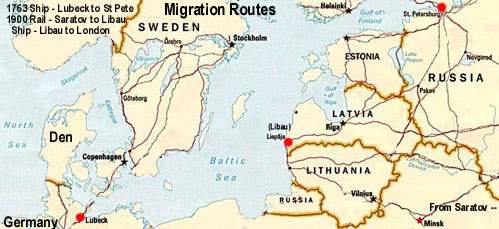Example Migration:
(Henry Hoff)
The first step in obtaining a passport was to go to the proper Russian
authority and swear that all debts were paid. Then one had to appear before
the district commissioner for a permit to leave the country. All emigrants
were required to give ten percent of their property value to the government
plus eighteen rubles (about one dollar) per person.
The families disposed of all property which could not be taken with
them. They carried a few small bundles of clothes needed for the trip.
They also carried food such as Pumpernickel bread, cheese, cold cured salted
meat and onions. Feeding the babies was no problem because all were breast
fed.
In 1880, 108 families left a Volga village by horses and wagons, then
by boat on the Volga River to Saratov. There they were joined by other
Volga Germans on their way to North America, a total of 1,454 persons.
They went by train from Saratov to the Polish border where each adult
had to have 150 rubles to enter. They traveled on to Bremen, Germany, where
they had a three day layover.
A man from the steamship company gave them news that their voyage fare
was 38 rubles per head and included all expenses on the ship. The following
day was filled with apprehension as the emigrants prepared to leave for
Bremenhafen. The mighty ship anchored in the harbor didn't frighten them
so much as did the vast ocean. Some people trembled and grew pale while
others burst into tears. Women screamed, children cried, and some were
unable to move, but they could not go back now. The men took them by arm
and helped them to walk up the gangplank.
A storm set in as the ship crossed the English Channel and some passengers
were sick. Freight was loaded in England and the ship began to cross the
Atlantic. The young people spent much time on deck, the women did various
chores, mostly washing clothes. A problem with drying was no clothes lines,
so they would pin the washed baby diapers to their skirts and walk around
until they were dry. Others danced and played cards while some walked around
the deck breathing the fresh salt air which was very refreshing compared
to the unpleasant odors below deck. After fifteen days at sea the ship
arrived to the North American Shores. |








